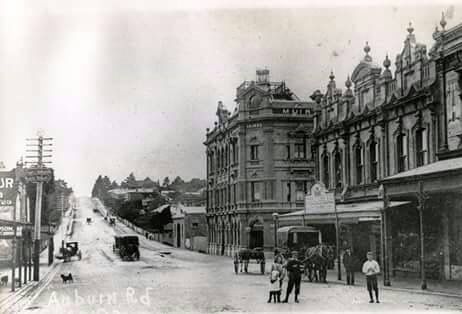If you stand on the intersection of Auburn Road and Victoria Road in Auburn Village and look over at the imposing Italianate pub that stands grandly on the corner, you can almost hear the sounds that once came from the Auburn Hotel echoing down the years
In the early 1890s, Auburn Village, located between Burwood Road and Victoria Street, was thriving with around 40 shops and a notable hotel built in 1888. The area was accessible by Victoria’s first cable tram, launched in 1885 along Flinders Street to Richmond, and an extended city to Hawthorn railway reaching Camberwell in 1882. Local historian John Torpey, working on a book for the Hawthorn Historical Society, describes Auburn Road as a busy hub where horses pulled carts and drays, contributing to the bustling commerce.
Melbourne, known as ‘Marvellous Melbourne’ since British journalist George Augustus Sala’s visit in 1885, was internationally recognized for its grandeur. The city, experiencing a population boom, struggled to accommodate the rapid growth, astonishing visitors with its size and prosperity. The Auburn, a testament to the city’s civic pride, was an architectural marvel designed by M. Woolf, reflecting Melbourne’s ambition and affluence during this era of significant expansion and development.
In 1952, the Auburn Hotel, managed by the legendary Essendon footballer John Coleman, was a hub of joy and laughter. Coleman, renowned for scoring 537 goals in just 98 games before retiring at 25 due to a knee injury, left a lasting legacy with the AFL’s Coleman Medal named in his honor. After his retirement in 1955, Coleman entered pub management, overseeing the Auburn Hotel in the early 1950s.
Ted Rippon, the hotel’s licensee, also an ex-Essendon and St Kilda player and football commentator, brought Coleman to the Auburn. Their presence added glamour to the already popular pub, especially during a time when football was a major pastime in Melbourne, players were idolized, and pubs served as crucial social hubs before television’s arrival.
The Auburn, known for attracting football fans, had an enhanced sporting ambiance due to Coleman and Rippon’s involvement. Its courtyard featured wine barrels as tables, painted in the colours of every League team, symbolizing the pub’s strong connection to the sport and its fanbase.
In the 1980s, The Auburn, known for 28 years as the Geebung Polo Club, became a popular Melbourne hotspot, especially for its Sunday sessions. Notably, the band room (now wine room), was a key attraction, hosting vibrant Sunday afternoon music sessions in the early 2000s, drawing large crowds.
Adam 12, a covers band with a nine-year residency from 2004 to 2013, featured prominently in these events. Kristin Holland, the band’s lead singer and bass guitarist, recalls the intense energy of these sessions, with packed, enthusiastic crowds making it necessary for the band to enter through a side window. The room was often filled to the brim, with people singing along and the windows steamed up from the heat and excitement.
Kristin continues to perform at the Auburn as a duo, appreciating the venue’s ongoing commitment to live music, albeit in a more subdued manner.
Standing on Auburn Road, one can view the hotel’s top floor, once the publican’s residence, now functioning as event spaces. Inside, a grand staircase leads to the upper floors, and there’s a historic circular bar in the front, frequented by local Tex, who passed away in early 2023. Tex was integral to the pub’s community, known for organizing raffles and being a cheerful, helpful figure.
The Auburn has experienced flooding, notably in 2014 and 2016, due to its low-lying position. This led to incidents like a neighbour’s garden tools being washed into the pub, humorously returned later.
Reflecting the area’s demographic shift, the band room was converted into a wine room in 2014, signalling a change from a drink-focused culture to one appreciating good food. The Auburn now caters to families, emphasizing quality dining with a focus on Victorian wines and produce, offering activities like petting zoos and face painting for kids.
Further developments include the new Pavilion space with a pizza oven and extended beer garden with children’s playground. The Auburn, adapting to changes, remains a cherished spot for all ages, blending fine dining, wine, and music in a welcoming atmosphere. It stands as a testament to Melbourne and Hawthorn’s evolving story, ready to create new memories while cherishing the old.





